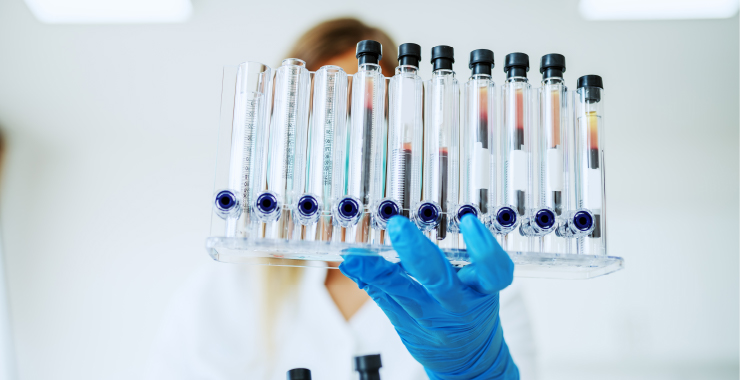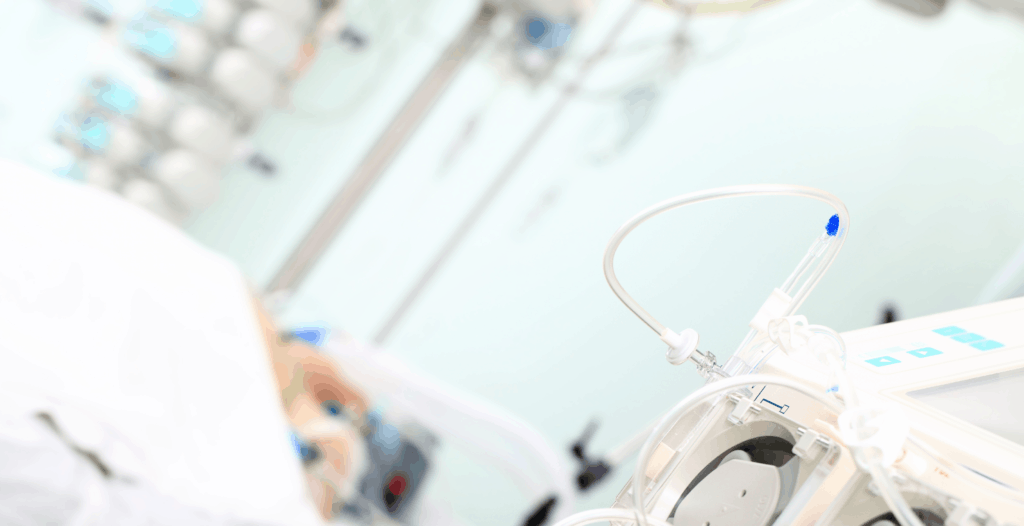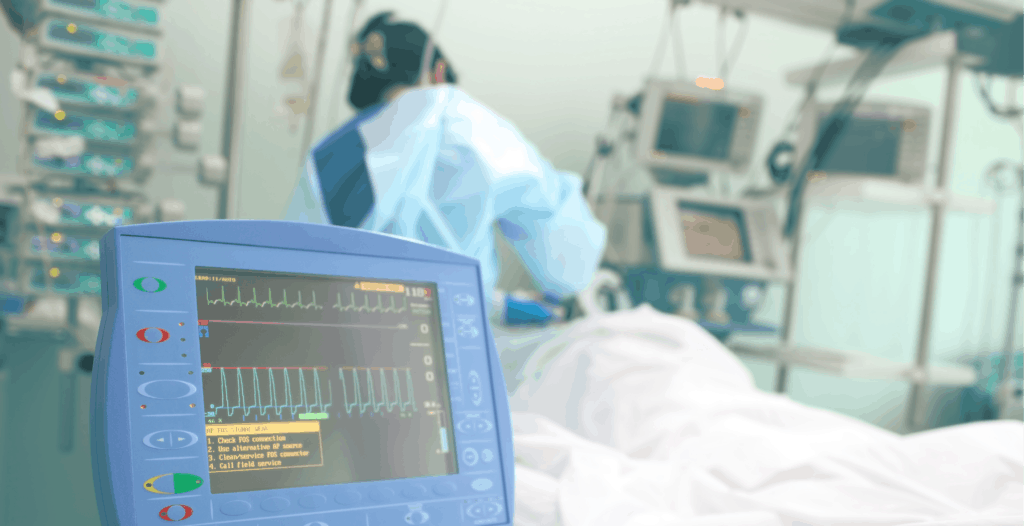Vancomycin Renal Dose
In this article:
Vancomycin is an antibiotic originally isolated from the bacteria Streptococcus orientalis.
It was discovered in the 1950’s but it gained popularity in the 1970’s for treating antibiotic-resistant infections, particularly penicillin-resistant staphylococcal infections.
Vancomycin is a glycopeptide antibiotic that stops bacteria from making peptidoglycan, the main component of bacterial cell walls. It is an effective antibiotic treatment against Gram-positive bacteria that have peptidoglycan in their cell walls.
Despite its useful properties, many studies have shown vancomycin therapy damages the kidneys and other organs.
There are ways to safely manage and make dosage adjustments to prevent further harm from occurring.
Uses of Vancomycin

The Food and Drug Administration (FDA) has approved two different kinds of vancomycin.
One type is given by mouth (orally), and another is injected into a vein, or intravenously (IV). The administration method depends on the type of infection and how serious it is.
Oral vancomycin is used to treat infection-induced diarrhea, including cases caused by Clostridiodes (Clostridium) difficile.
Additionally, it is used to treat enterocolitis caused by methicillin-resistant Staphylococcus aureus (MRSA).
However, when vancomycin is used for infections in the digestive system, it cannot get into the blood and treat other infections.
For this reason, vancomycin is injected IV for all other infections besides C. difficile and MRSA enterocolitis.
IV vancomycin treats bacterial infections from methicillin-resistant Staphylococcus aureus , Enterococcus faecalis, and methicillin-resistant Staphylococcus epidermis (MRSE). MRSA and MRSE are both resistant to beta-lactam antibiotics (for example, oxacillin), which are commonly used to treat most staph infections.
Vancomycin can also be used for a variety of other serious or severe infections, including:
- Skin and soft tissue infections
- Infection of the inner lining and valves of the heart (endocarditis)
- Infections in the blood (bacteremia)
- Blood poisoning (septicemia)
- Lower respiratory tract infections
- Osteomyelitis (Infection in the bone)
- Bacterial meningitis
Vancomycin is also used to treat other conditions off-label, such as:
- Intra-abdominal infections due to MRSA
- Necrotizing skin and soft tissue infections
- Prosthetic joint infections
- Surgical site infections
- Prevention of surgical infections
- Bacterial infections in the eye (bacterial endophthalmitis)
- Prevention of Group B streptococcal infections in newborns
Vancomycin is useful for treating infections in patients who are allergic to penicillin or cephalosporins.
It is important to note that vancomycin and other antibiotics are not effective in treating viral infections.
Dosing of IV Vancomycin

In March 2020, new vancomycin dosing guidelines from leading infectious disease and pharmacy groups were released.
- Non-obese adult patients with normal kidney function begin with a dosing of 15 to 20 mg/kg IV (based on the patient’s actual body weight), given every 8 to 12 hours.
- Non-obese children with normal kidney function between the ages of 3 months and 12 years old are given 60-80 mg/kg/day, with doses divided up and given every 6 hours.
- In children who are 12 years and older, the recommended dose is 60-70 mg/kg/day, with doses divided up and given every 6 to 8 hours.
- Elderly patients and/or patients with impaired kidney function receive lower doses of vancomycin, while obese patients may receive higher doses.
Vancomycin is processed in the kidneys, and it is important to give enough drug to combat the infection without causing damage.
In order for vancomycin to work correctly, a certain concentration needs to be maintained in the blood. Vancomycin has a narrow therapeutic window, and it is easy to under or overdose a patient.
Blood work is done to ensure levels of the drug remain within this window to prevent organ damage or antibiotic resistance. This also helps to determine when the next dose should be administered to the patient.
The half-life of a drug is how long the body takes to break down one-half of a given dose.
In patients with good renal function, the half-life of vancomycin is between 4 to 6 hours; in patients lacking functional kidneys, the half-life can be as long as is 7.5 days. Every person will eliminate vancomycin at a different rate and dosing can be tailored to an individual patient.
In 2009, guidelines were released stating that patients’ dosing should be monitored by trough levels.
The trough level measurement is the lowest concentration of drug in the blood before the next dose is given.
It was previously recommended that patients maintain a trough levels of 10 mcg/mL for all infections; severe or complicated infections required a concentration of 15 to 20 mcg/mL.
This target trough level was chosen to make sure patients were receiving enough drug to kill the infection, but not too much drug that could cause serious damage to the kidneys.
In March 2020, new guidelines were released for vancomycin dosing recommending a shift away from trough levels:
- For patients that are not obese: an initial loading dose of 20to 35 milligrams/kilogram (mg/kg) up to a maximum of can be given to a patient with a serious MRSA infection or other illness so that effective serum levels can be reached quickly.
- If the patient is obese: the recommended loading dose is 20 to 25mg/kg .
In both cases, the maximum recommended loading dose is 3000mg. After bloodwork is done, a computer program calculates the correct dose. Doctors or other prescribers will give patients the correct amount of vancomycin to reach a target area under the curve (AUC) concentration between 400 to 600 mg*h/L.
Vancomycin Dosing in Patients undergoing Dialysis

When someone develops end-stage kidney failure, their kidneys can no longer function properly.
As a result, the patient needs dialysis, which replicates what the kidneys normally do in the body; this includes removing salt, waste and extra water from the body.
Vancomycin is processed by the kidneys, and this treatment affects drug dosing.
Factors to consider when dosing vancomycin in a dialysis patient include when the dose is given (how often, and whether it is before or after dialysis treatment), and the amount of time in between administration and dialysis treatments.
Studies have shown that dosing to a predialysis concentration of 10 to 20 mg/L results in an AUC of 250 to 450 mg*h/L, which is lower than the target AUC of 400 to 600 mg*h/L. As a result, predialysis concentrations should be maintained at 15 to 20 mg/L to achieve this target AUC.
It is recommended to give maintenance doses of vancomycin with each dialysis session so that an effective concentration of drug remains in the blood to treat infections.
Larger doses may need to be given in between dialysis sessions to prevent serum concentrations of the drug from dropping.
To test for serum concentration of vancomycin, wait at least 2 hours after dialysis treatment to allow the drug to enter the blood from tissues.
Side Effects of IV Vancomycin

You can find our full list of Vancomycin Side Effects here. Common adverse side effects of IV administration of vancomycin in particular include:
- Low blood pressure (hypotension)
- Muscle pain or spasms in the chest and back
- Allergic reactions, such as anaphylaxis or hives
- Shortness of breath or wheezing
- Dizziness
Other adverse effects that are less common include:
- Drug fever
- Chills
- Inflammation of a vein at the injection site (phlebitis)
- An increase in white blood cell count (eosinophilia)
Red Man Syndrome
When vancomycin is administered too quickly intravenously, red man syndrome can develop.
Symptoms tend to begin 4 to 10 minutes after administration, including:
- Itching or uncomfortable skin (pruritus)
- Flushing
- Red skin rash on the upper body, face, and neck
Between 3.7% to 47% of patients develop red man syndrome. The faster the infusion of vancomycin, the more likely a patient is to develop the syndrome.
The most severe cases occur in children and patients who are 40 years old or younger.
Antihistamines, such as cimetidine and diphenhydramine, can be given before infusion to help prevent red man syndrome from occurring.
However, the most effective method is administering the drug slowly over 60-120 minutes.
Nephrotoxicity of Vancomycin

Vancomycin has been shown have nephrotoxicity, which can lead to acute kidney injury (AKI).
This is most likely caused by the drug stopping blood flow and oxygen from reaching the kidneys.
Patients are at a higher risk for developing AKI if they have underlying renal function impairment, use other nephrotoxic medications, are elderly, or are dehydrated. There are multiple ways that AKI can be defined.
These include:
- An increase in serum creatinine of >0.5 mg/dL or
- A 50% increase from baseline in two consecutive daily readings, or
- A decrease in calculated creatinine clearance of 50% from baseline on two consecutive days in the absence of an alternative explanation.
- Newer studies suggest that a more sensitive threshold of an increase in serum creatinine >0.3 mg/dL over a 48-hour period may be an indicator of AKI.
A safe way to determine vancomycin dosing is to base it on a patient’s estimated creatinine clearance; this helps prevent overworking the kidneys.
The main function of the kidneys is to filter the blood and remove toxins from the body.
When a patient has renal function failure (their kidneys no longer work), hemodialysis can be done.
This procedure uses an artificial kidney, or dialyzer, to clean the blood.
An infection in the blood called bacteremia can develop during hemodialysis treatment and vancomycin is used to treat it. However, these patients cannot properly process the drug, and a dose adjustment needs to be made so it does not cause any further damage.
Ototoxicity of Vancomycin

Vancomycin has been shown to induce ototoxicity, an ear condition where the auditory nerve and cochlea are damaged.
It rarely occurs when vancomycin is given on its own; however, it is quite common in patients taking high doses as monotherapy or if it is combined with other ototoxic medication (aminoglycosides, loop diuretics, and anticancer drugs).
Patients who have underlying hearing loss conditions are also commonly affected.
Vancomycin treatment should be stopped if patients lose their hearing or balance, or experience ringing in the ears (tinnitus).
In some cases, ototoxicity induced by vancomycin treatment may be irreversible.
Related Articles


References
Hale CM, Seabury RW, Steele JM, Darko W, Miller CD. Are Vancomycin Trough Concentrations of 15 to 20 mg/L associated with increased attainment of an AUC/MIC ≥ 400 in Patients with Presumed MRSA Infection? J Pharm Pract. 2017;30(3):329-335. https://www.ncbi.nlm.nih.gov/pubmed/27074786
Hazlewood KA, Brouse SD, Hall RG. Vancomycin-Associated Nephrotoxicity: Grave Concern or Death by Character Assassination? Am J Med. 2010;123(2):182.e1-182.e1827. https://www.ncbi.nlm.nih.gov/pmc/articles/PMC2813201/
MedlinePlus Drug Information. Vancomycin Injection. Revised April 15, 2016. Accessed April 7, 2020. https://medlineplus.gov/druginfo/meds/a601167.html
Levine, DP. (2006). Vancomycin: A History. Clin Infect Dis. 2006;42 Suppl 1:S5-S12. Accessed April 8, 2020. https://www.ncbi.nlm.nih.gov/pubmed/16323120
Patel S, Preuss CV, Bernice F. “Vancomycin.” StatPearls [Internet]. 28 February 2020. Accessed April 7, 2020. https://www.ncbi.nlm.nih.gov/books/NBK459263/
Rybak MJ, Le J, Lodise TP, Levine DP, Bradley JS, et al. Therapeutic Monitoring of Vancomycin: A Revised Consensus Guideline. Am J Health Syst Pharm [Epub ahead of print.] Accessed April 7, 2020. https://www.ncbi.nlm.nih.gov/pubmed/32191793
Taylor ME, Allon M. Practical Vancomycin Dosing in Hemodialysis Patients in the Era of Emerging Vancomycin Resistance: A Single-Center Experience. Am J Kidney Dis. 2010;55(6):1163-1165. https://www.ncbi.nlm.nih.gov/pmc/articles/PMC4019019/
